Ford Mustang (1999-2004) Service Manual: Hydraulic System
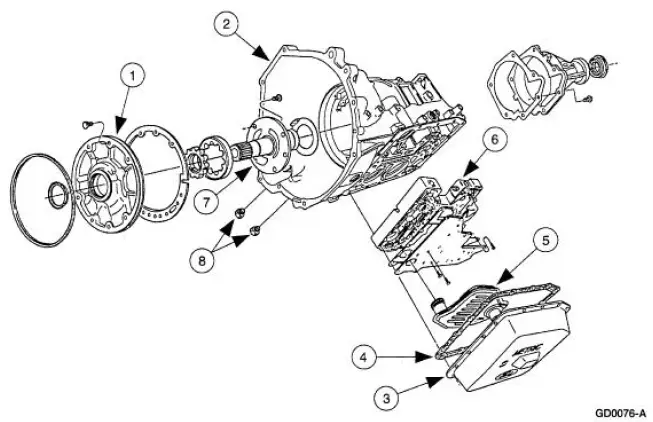
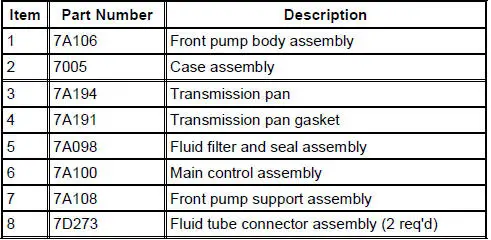
Fluid Pump
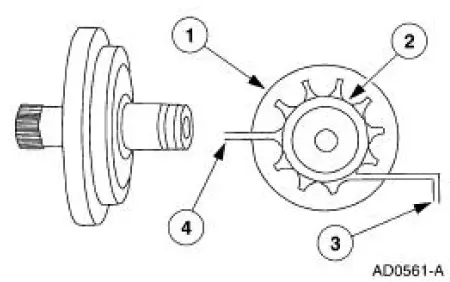


The transmission uses a gerotor-type design front pump support and gear. The pump provides the volume of fluid needed to charge the torque converter, main control assembly, cooling system and lube system. Pump pressure is regulated by the main regulator valve. The pump has an internal boost circuit which is more efficient at lower engine speeds.
Filter
All fluid drawn from the transmission pan by the pump passes through the filter. The filter and its accompanying seal are part of the fluid path from the sump (pan) to the fluid pump.
Main Control
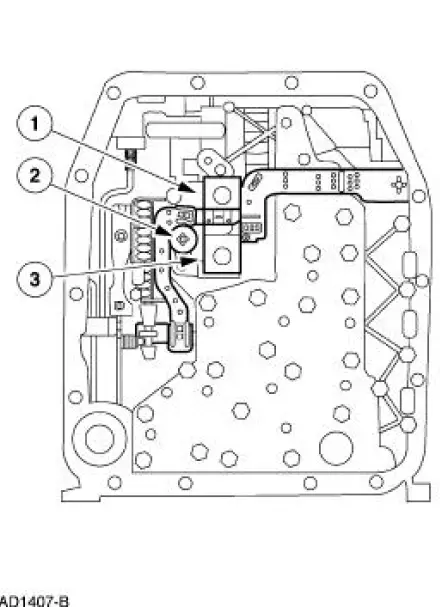

The main control valve body houses three electronic solenoids:
- two shift solenoids
- one torque converter clutch solenoid (TCC solenoid)
Accumulators
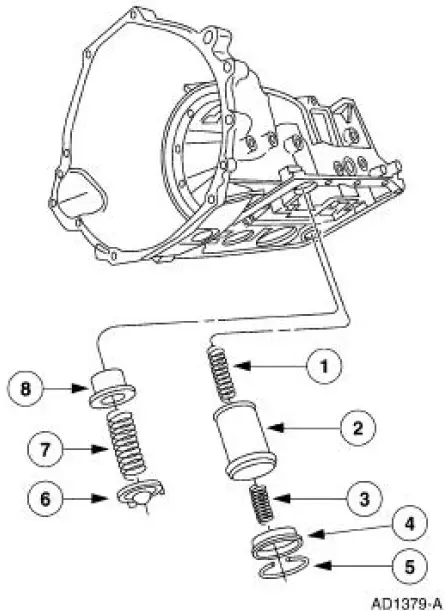
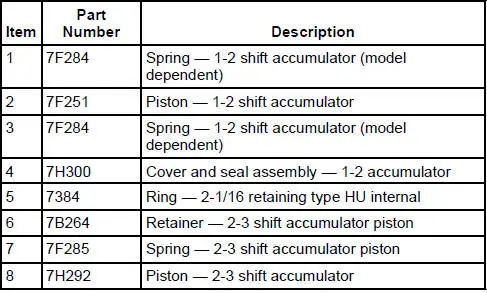
The transmission uses two accumulators:
- 1-2 Accumulator - The 1-2 accumulator is used to soften the 1-2 shift by absorbing some of the pressure directed to the intermediate clutch. Constant line pressure is applied to the middle section of the 1-2 accumulator piston, opposing the intermediate clutch pressure, until the pressure is high enough to overcome line pressure. The top of the piston is exhausted to the sump.
- 2-3 Accumulator - The 2-3 accumulator is used to soften the 2-3
shift by absorbing some of
the direct clutch pressure. Forward clutch pressure is applied to
the top side of the 2-3
accumulator piston, holding the piston down until clutch pressure is
high enough to overcome it.
The middle section of the piston is exhausted to the sump.
 Apply Components
Apply Components
There are eight apply components used to drive or hold the planetary
gearset components.
Band-Overdrive
1. The overdrive band holds the reverse clutch drum stationary in fourth gear
an ...
 Transmission Electronic Control System
Transmission Electronic Control System
The powertrain control module (PCM) and its input/output network
control the following transmission
operations:
Shift timing
Line pressure (shift feel)
Torque converter clutch
Th ...
Other materials:
Muffler - 4.6L (2V)
Removal and Installation
1. Use a jack to support and lower the rear axle.
2. Remove the upper arm-to-differential bolt.
3. Remove the nut and bolt, and disconnect the rear shock absorbers (18124)
from the axle
housing.
Discard the nut.
4. Lower the r ...
General information
WARNING: Driving while distracted can result in loss of vehicle
control, accident and injury. Ford strongly recommends that drivers
use extreme caution when using any device or feature that may take their
focus off the road. Your primary responsibility is the ...
Starter Motor - 3.8L
Removal
WARNING: When servicing starter motor (11002) or carrying out other
underhood work in
the vicinity of the starter motor, be aware that the heavy gauge battery
input lead at the starter
solenoid (11390) is "electrically hot" at all times. A prote ...
